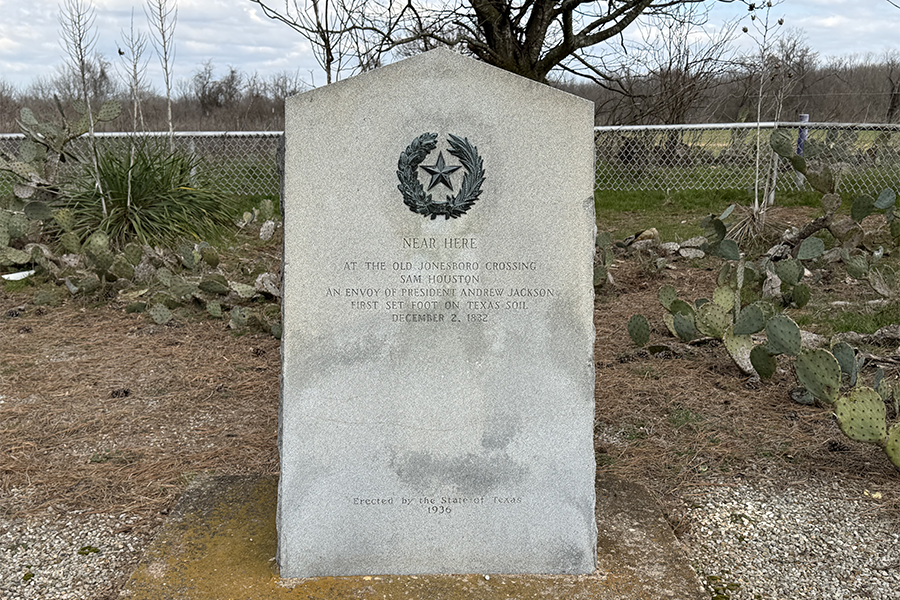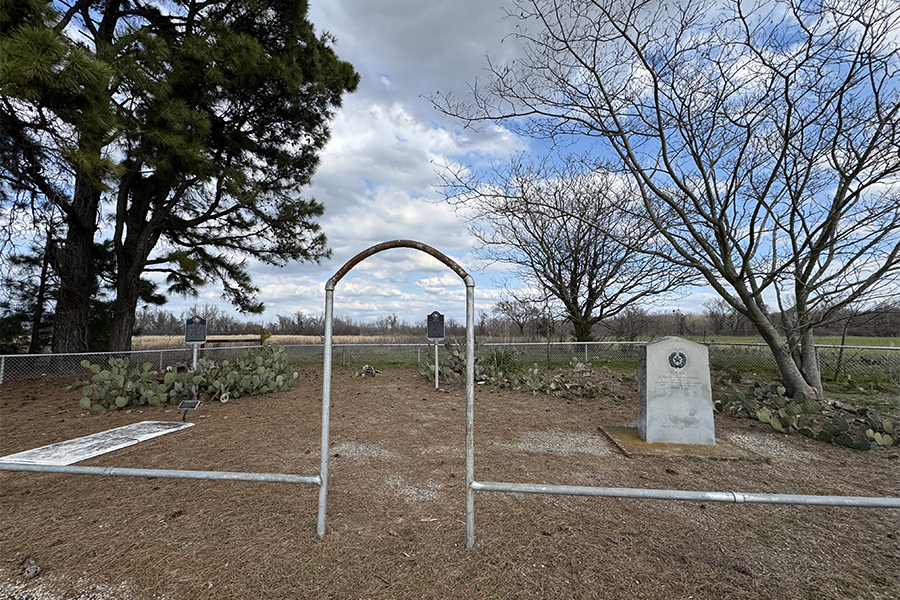
April 29, 2025
By Kristen Prater
CLARKSVILLE, Texas — Many of today’s most legendary Texans entered the state through a tiny steamboat town, cutting trails that would become some of the state’s earliest roads, and TxDOT works tirelessly to preserve these historic places.
Famous men like Sam Houston, Stephen F. Austin and Davy Crockett all entered Texas at Jonesboro, a now-defunct settlement in Red River County, north of Clarksville. Today, the area is considered the “Gateway to Texas.”
“This part of Texas is steeped in transportation history starting with the "Gateway to Texas" to the birthplace of President Eisenhower, the father of the interstate system,” said Noel Paramanantham, chief engineer of TxDOT’s Paris District. “As we move into the future of transportation, as TxDOT, it is our duty to preserve this heritage along our network by working with our communities."
Jonesboro was named after the hunter Henry Jones, who was known to hunt across the shoreline of the river. He owned a ferry and crossed the Red River into Texas, bringing settlers with him.
Until the early 1800’s there were no north-south roads in Texas. The original trails near Jonesboro were a series of Caddo trails.

In 1824 Nicholas Trammel cut the180-mile trail for use by wagons. It was used for illegally smuggling horses from the Red River prairies into Spanish Texas. Settlers from Arkansas, Missouri and Tennessee all began their western journey on what became known as the Trammel’s Trace.
Trammel’s Trace, an early road into Texas, ran from the Red River to Nacogdoches where it met the Camino Real, the King’s Highway, also known as the Old San Antonio Road.
Jonesboro was wiped out by a flash flood in the 1840s, and all that remains is a small monument along FM 410.
These historic monuments stand today in Sam Houston Park in Red River County as a proud reminder of all who came through the port of the “Gateway to Texas,” to blaze the trail into the Lone Star State we call home. Many Texans visit these monuments and like to add their names to a part of history by carving their initials in the cactus as a local tradition.